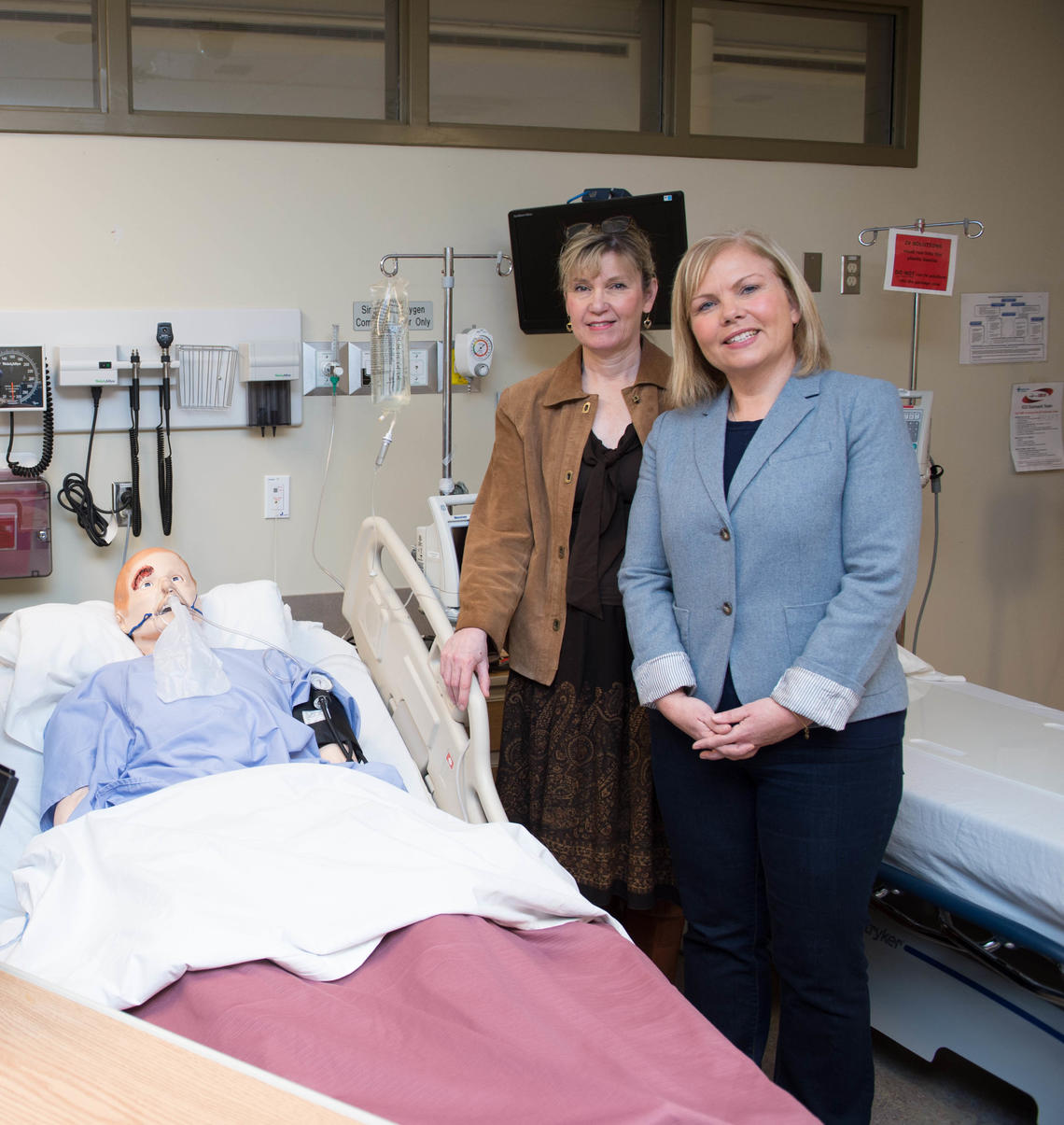
Sandra Goldsworthy and Linda Duffett-Leger, both experts in simulation research and education.
Feb. 17, 2015

Sandra Goldsworthy and Linda Duffett-Leger, both experts in simulation research and education.
For more than five years, the Faculty of Nursing’s Clinical Simulation Learning Centre (CSLC) has guided thousands of nursing students through scenarios involving “patients” experiencing cardiac arrests, mental illness and domestic abuse, among other health-care events. With the addition of two new faculty members, the next phase for the CSLC will also make it a hub for simulation research.
Sandra Goldsworthy joins the University of Calgary (from Georgian College/York University Collaborative BScN program) as an associate professor and research professor in simulation education, one of the very few dedicated nursing simulation researchers in the country.
Assistant professor Linda Duffett-Leger’s research in health technology examines ways to engage consumers in the design of technologies to better meet their health-care needs and develops e-learning tools for nursing students.
Both plan to use Nursing’s state-of-the-art simulation lab to explore their specific focus areas.
In collaboration with first-year nursing students at the University of New Brunswick, Duffett-Leger developed the NursApp, a virtual learning platform. “Engaging students in the design of e-learning technologies provides important information about student learning and facilitates the development of more user-friendly and generationally relevant e-learning approaches,“ she says.
“I am interested in empowering students to use e-learning to develop critical thinking skills that will aid them in professional practice. The CSLC will provide lots of opportunities to investigate students’ technology mediated learning needs and preferences, as well as those of faculty members.”
Duffett-Leger is part of a cluster of hires in multiple faculties for biomedical engineering across campus. She was brought on board to develop the critical role of nursing in the university’s Engineering Solutions for Health: Biomedical Engineering research strategy.
Goldsworthy’s research is more specific to simulation education. “I am looking toward building collaborations with partners, locally and internationally, to discover the leading innovations in the delivery of simulation among undergraduate nursing students and nurses working in acute- and critical-care practice settings,” she says. “I will also be investigating the current context of nurse work environments: how to recruit and retain Canadian nurses through the use of human simulation teaching and learning strategies.”
Goldsworthy has co-authored two simulation textbooks for nurse educators and for students.
Duffett-Leger and Goldworthy are excited to help showcase the CSLC as a key centre for intellectual activity on campus. “This research will ultimately help us build self-confidence and competence in our students so that they can then transition, as new grads, into the working world,” says Goldsworthy.
Researchers in the Faculty of Nursing, and the expertise in the CSLC, are integral parts of the Biomedical Engineering research strategy, one of the University of Calgary’s strategic research themes.